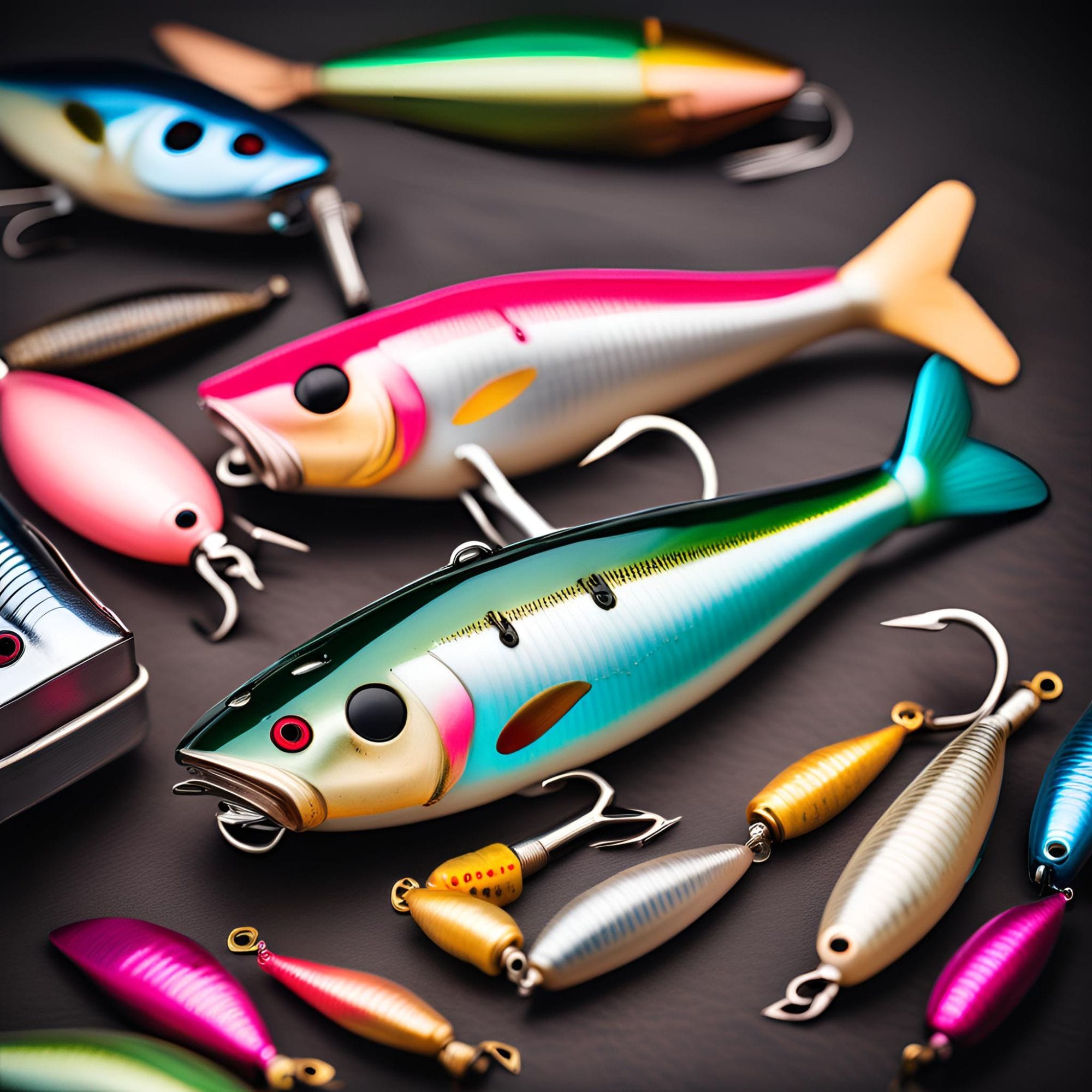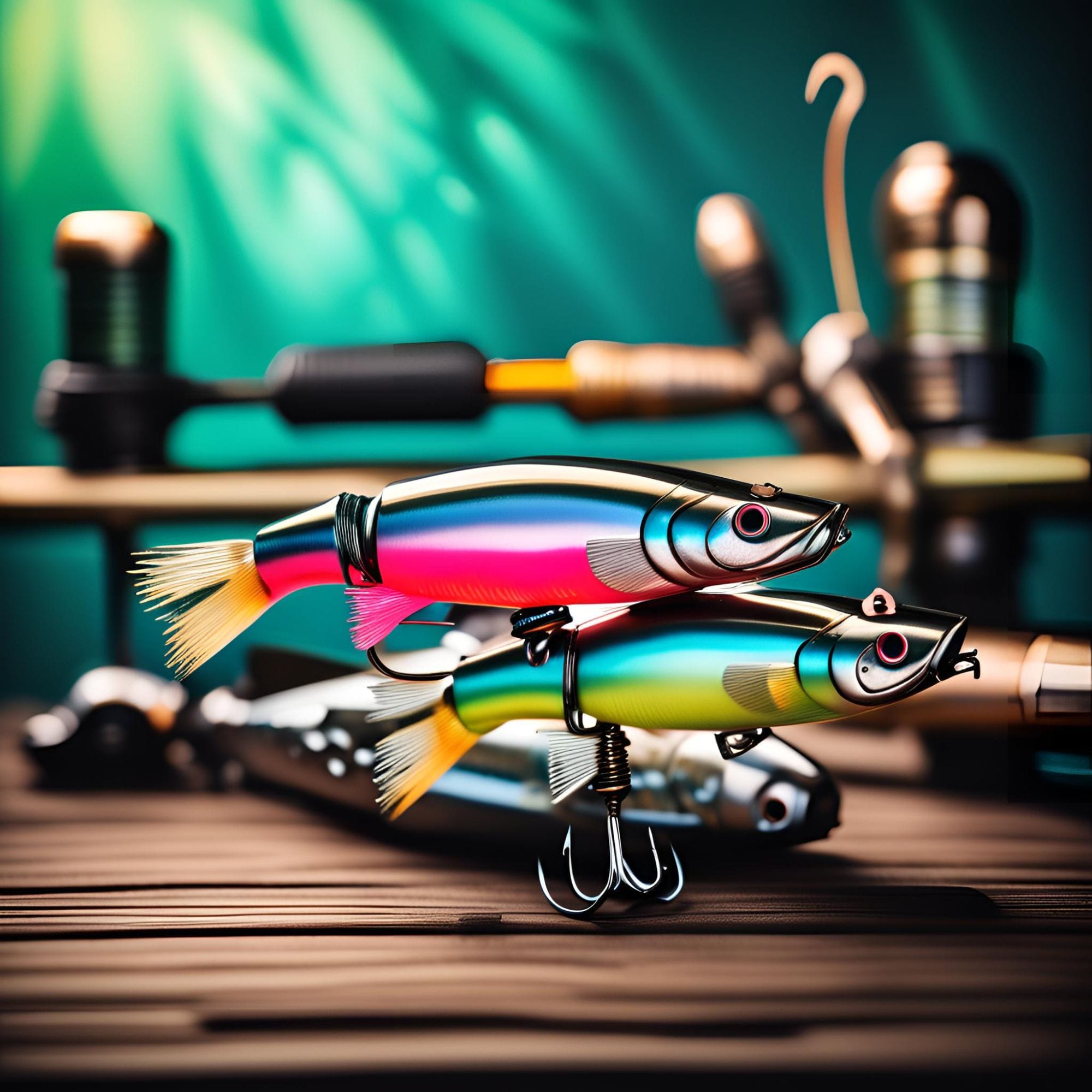Mastering Freshwater Fishing: A Comprehensive DIY Guide to Lure Selection and Techniques










buymeacoffee.com coming soon..
Introduction
Freshwater fishing is a cherished pastime for outdoor enthusiasts, offering a serene connection with nature while challenging anglers to outwit their aquatic targets. A crucial aspect of a fruitful fishing expedition is selecting the right lure. With a vast array of options available, choosing the perfect lure can appear overwhelming, especially for novices. In this comprehensive guide, we will explore the realm of freshwater fishing lures, offering insights on making informed choices to reel in that prized catch. Whether you are an experienced angler seeking to expand your gear or a beginner eager to learn, this guide will provide you with the knowledge and skills to elevate your freshwater fishing experience. So, gather your gear, pack your tackle box, and let's delve into the art of freshwater fishing with the ideal lure selection.
Choosing the Right Lure
When it comes to freshwater fishing, the choice of lure can be the difference between a successful day on the water and returning empty-handed. Understanding fish behavior and familiarizing yourself with the various types of lures available can assist you in selecting the optimal option for your fishing excursion.
Understanding Fish Behavior
Before delving into lure selection, it is essential to grasp the behavior of the fish species you are targeting. Different fish species exhibit varied feeding habits and preferences towards lures. For instance, bass may be enticed by fast-moving spinnerbaits, while trout might favor the natural appearance of soft plastic baits.
Types of Lures for Freshwater Fishing
- Spinnerbaits: Versatile lures that simulate small baitfish or insects, ideal for swiftly covering water and effective in murky or weedy areas.
- Crankbaits: Designed to mimic injured baitfish movement, enticing predatory fish, available in various sizes, shapes, and diving depths.
- Soft Plastic Baits: Available in forms like worms, grubs, and crawfish imitations, adaptable for finesse fishing in clear water or when fish are selective.
Factors to Consider When Selecting a Lure
Several factors should be contemplated when choosing a lure:
- Water Clarity: Clear water may necessitate natural-looking lures, while brightly colored or noisy lures could attract fish in murky water
- Time of Day: Matching your lure choice with fish feeding patterns throughout the day is crucial.
- Weather Conditions: Sunlight, wind, and water temperature can influence fish responses to lures, prompting adjustments based on prevailing conditions.
By considering these factors and understanding the behavior of your target fish, you can enhance your chances of landing a trophy fish on your next freshwater fishing adventure.
Techniques for Effective Freshwater Fishing
Employing the right techniques is pivotal for a successful freshwater fishing outing. Here are proven methods to maximize your chances of snagging that coveted catch:
Topwater Fishing
Topwater fishing is an exhilarating freshwater technique involving lures that float on the water's surface to entice fish strikes. Realistic movements resembling natural prey, such as insects or small fish, are essential. Mastering the art of creating ripples and splashes with your lure can attract predatory fish like bass and pike for an explosive strike.
Jigging and Bottom Bouncing
Jigging and bottom bouncing are effective techniques for targeting fish near the lake or riverbed. By using specialized lures that sink and jig up and down, mimicking injured prey, you can entice fish strikes. This technique is particularly effective for species like walleye, perch, and trout. Varying jigging patterns and speeds can help determine the most appealing presentation.
Trolling
Trolling, a versatile technique, entails dragging lures behind a moving boat to cover expansive water areas. It is especially effective for species like salmon, muskie, and striped bass that actively feed in large water bodies. Adjusting trolling speed, depth, and lure selection allows you to target different species at various depths and locations. Using planer boards or downriggers can further extend your reach and increase your chances of hooking a fish.
Mastering these freshwater fishing techniques and adapting them to the water body's conditions can significantly enhance your fishing success. Patience, practice, and a willingness to experiment with different methods are essential for becoming a skilled angler.
Maintaining and Storing Your Fishing Lures
Proper maintenance and storage of your fishing lures are vital to ensure their longevity and effectiveness on the water. Neglecting your lures can result in decreased performance and missed opportunities to catch fish. Here are best practices for cleaning, organizing, and checking your fishing lures:
Cleaning Lures After Use
After a fishing day, cleaning your lures is crucial to remove dirt, debris, or fish residue that may have accumulated. Neglecting this can lead to corrosion, deterioration, and reduced appeal to fish. Rinse lures in freshwater, use a soft brush or cloth to scrub, pay attention to hooks and crevices, and ensure they are dry before storing to prevent rust or mold growth.
Organizing Lures in Tackle Boxes
Proper organization is essential for maximizing fishing time and preventing frustration. Invest in a quality tackle box with compartments to keep lures separated and accessible. Organize by type, size, or color, and use containers or bags to prevent tangling or damage during transport. Labeling or color-coding can aid quick identification and selection.
Checking and Replacing Damaged Lures
Regularly inspect lures for wear, such as rusted hooks or chipped paint, which can affect their effectiveness. Repair or replace damaged parts before your next trip. Maintaining your lures by replacing hooks, touching up paint, and securing loose components can increase success on the water.
Following these guidelines for maintaining and storing your fishing lures ensures they are in top condition for your next freshwater fishing adventure.
Conclusion
Freshwater fishing offers a fulfilling and tranquil way to connect with nature for outdoor enthusiasts. Selecting the right lure is crucial for a successful fishing trip. Understanding fish behavior, choosing appropriate lures, and considering various factors can enhance your fishing experience.
Experimenting with different lure types and mastering techniques like topwater fishing, jigging, and trolling can make you a more versatile angler. Properly maintaining and storing your lures is essential for their longevity and effectiveness.
As you continue to refine your freshwater fishing skills, remember that patience, persistence, and a love for nature are vital for a rewarding fishing experience. So, gear up, head to your favorite fishing spot, and let the thrill of the catch inspire you to keep learning and growing as an angler. Happy fishing!






Member discussion